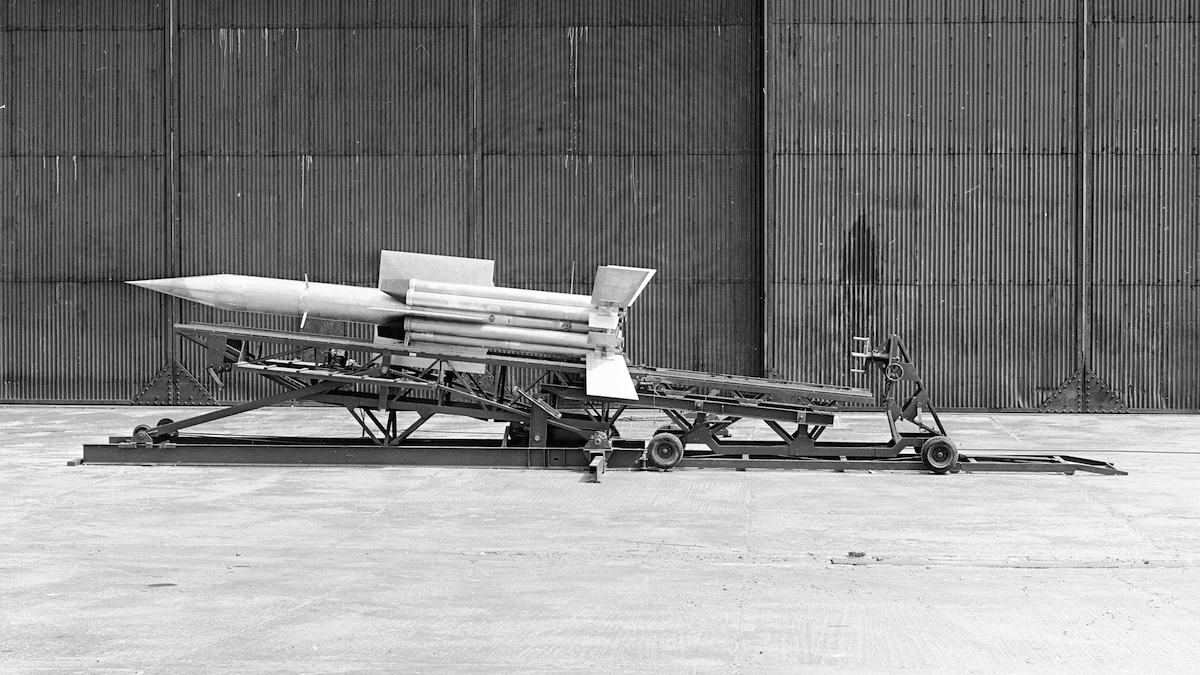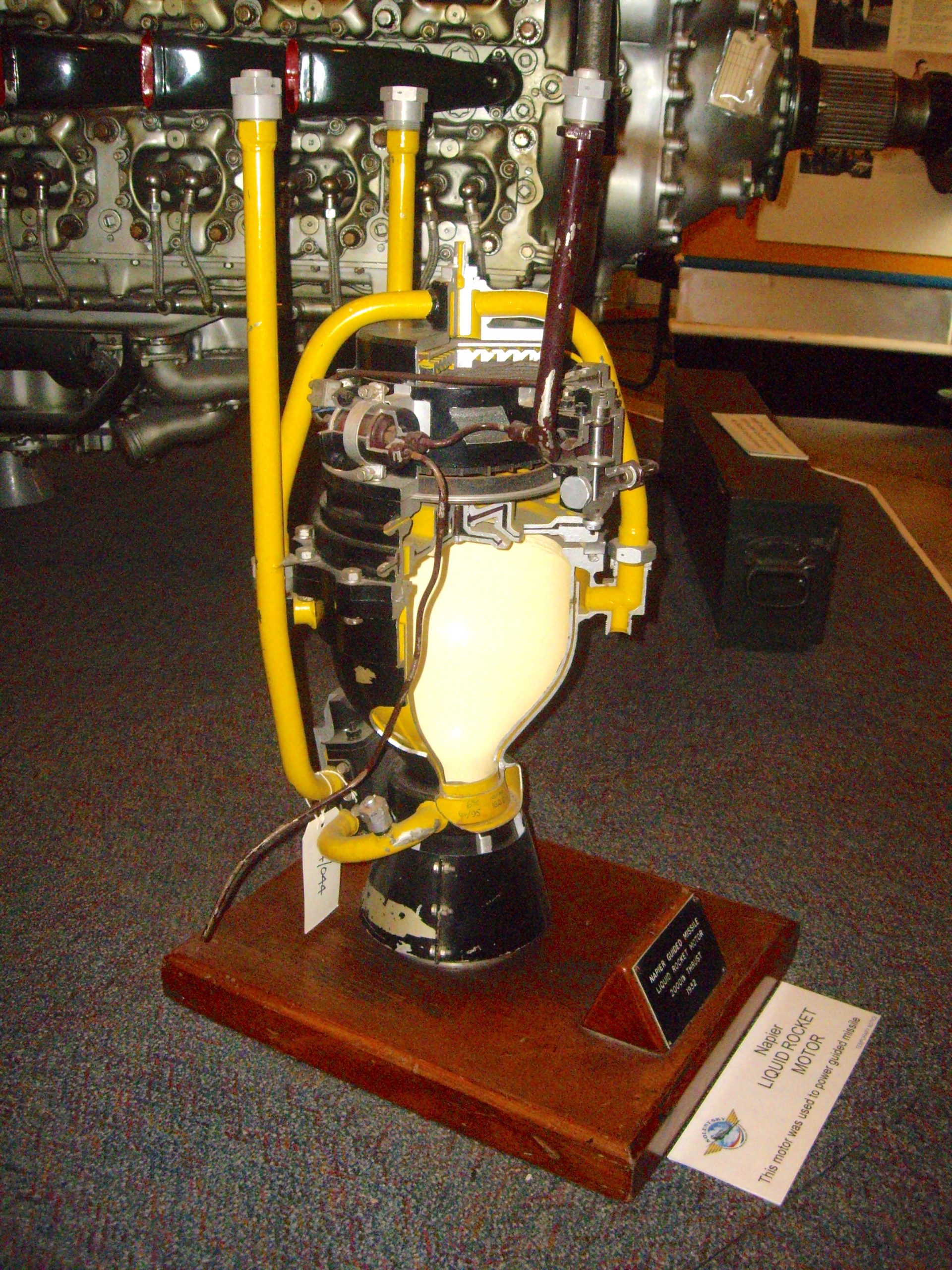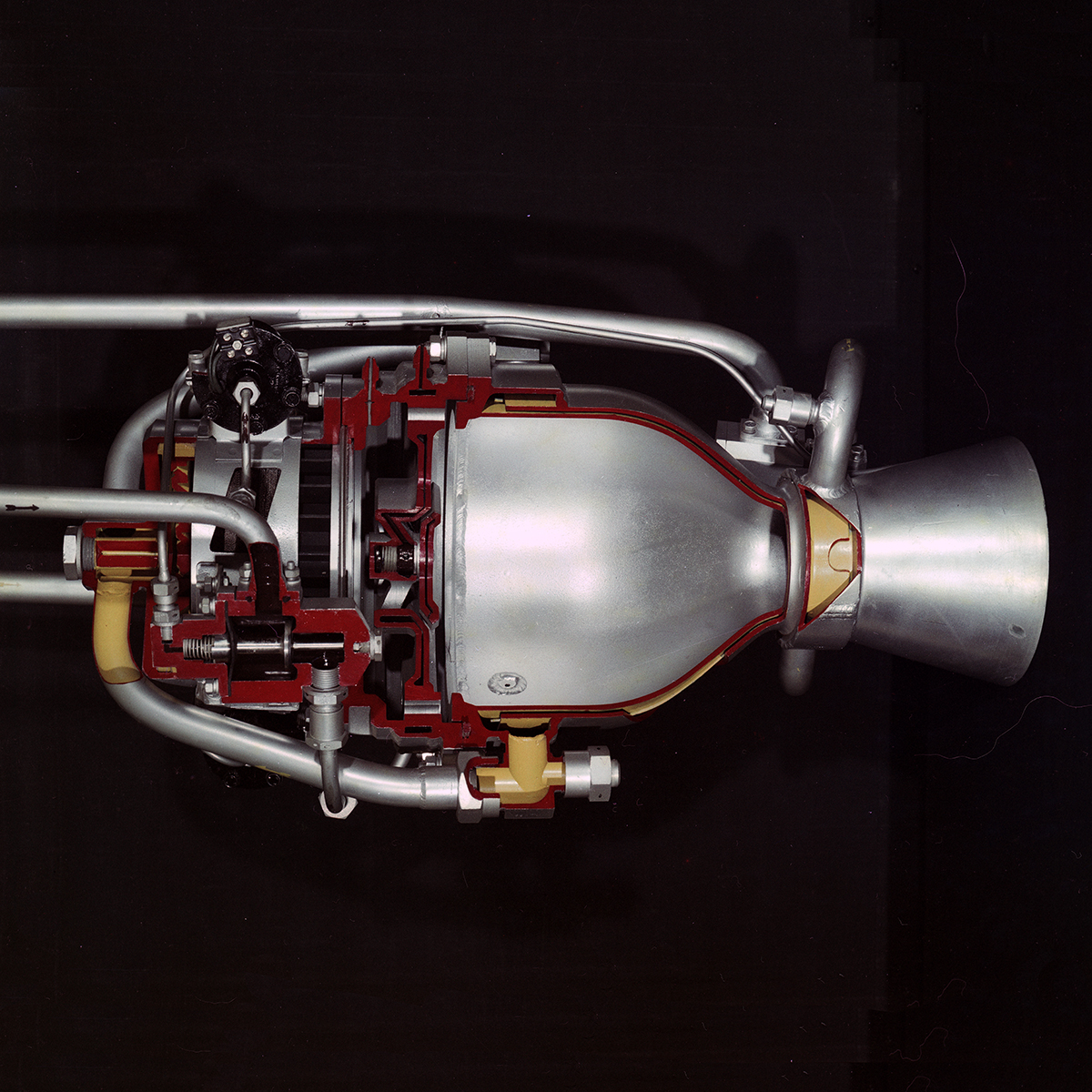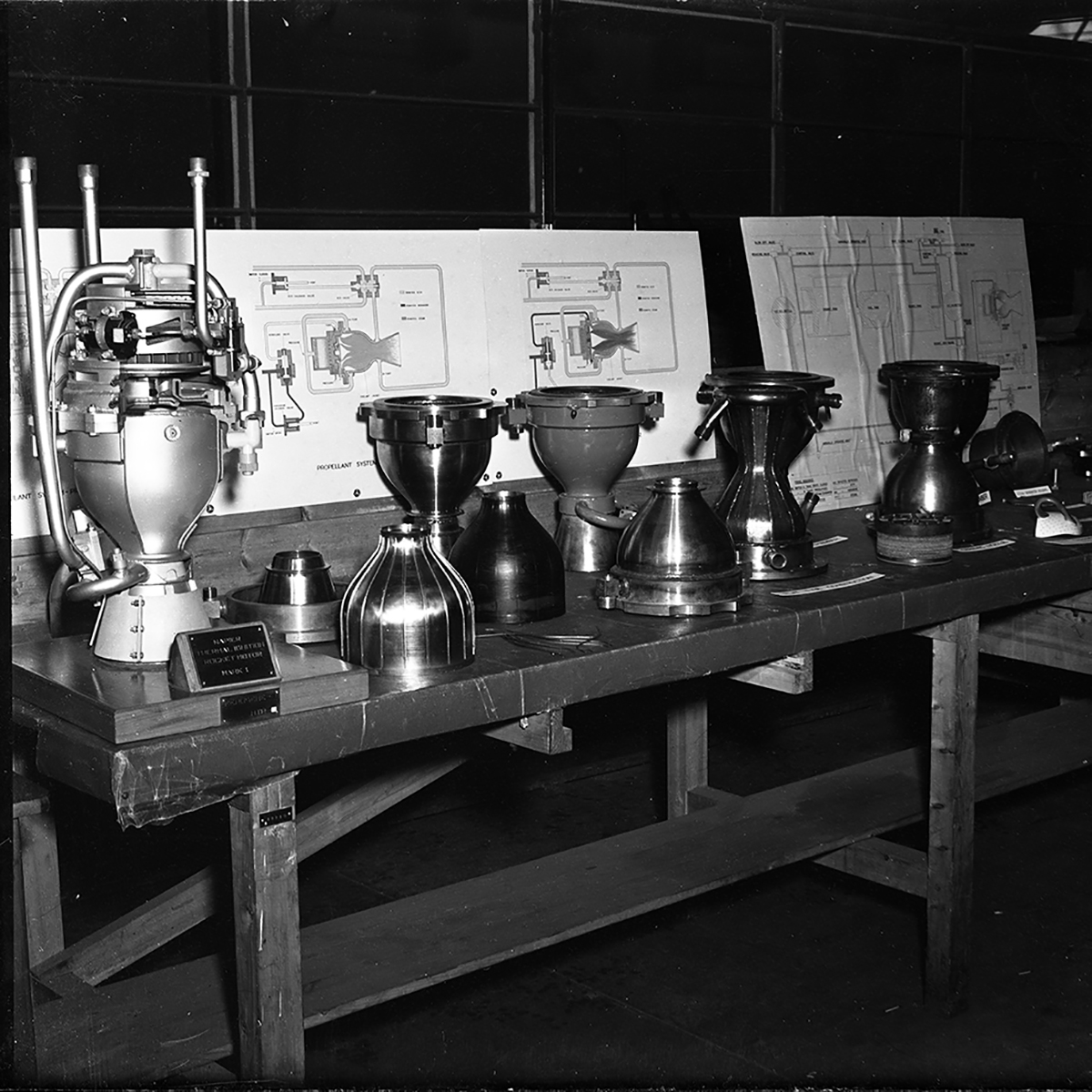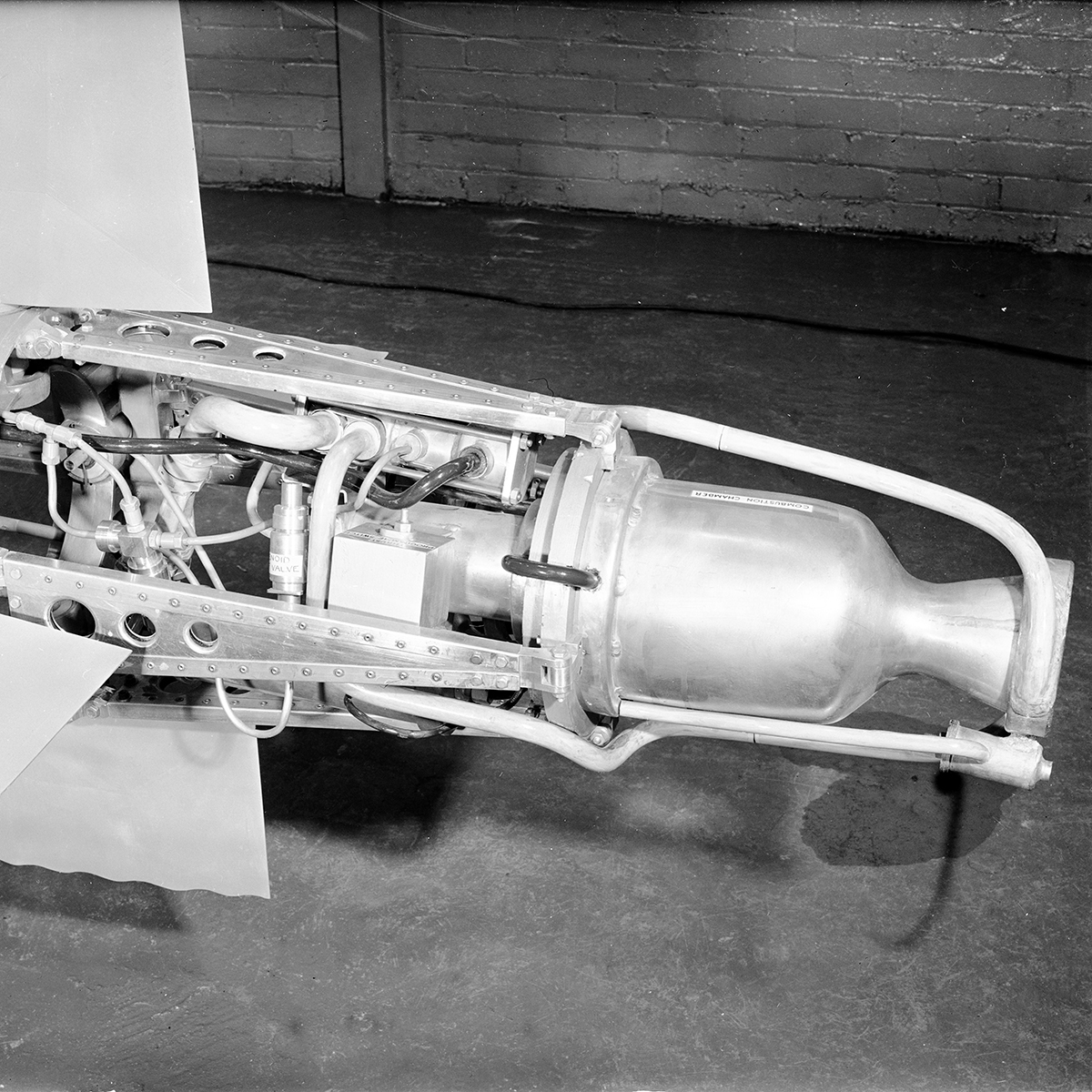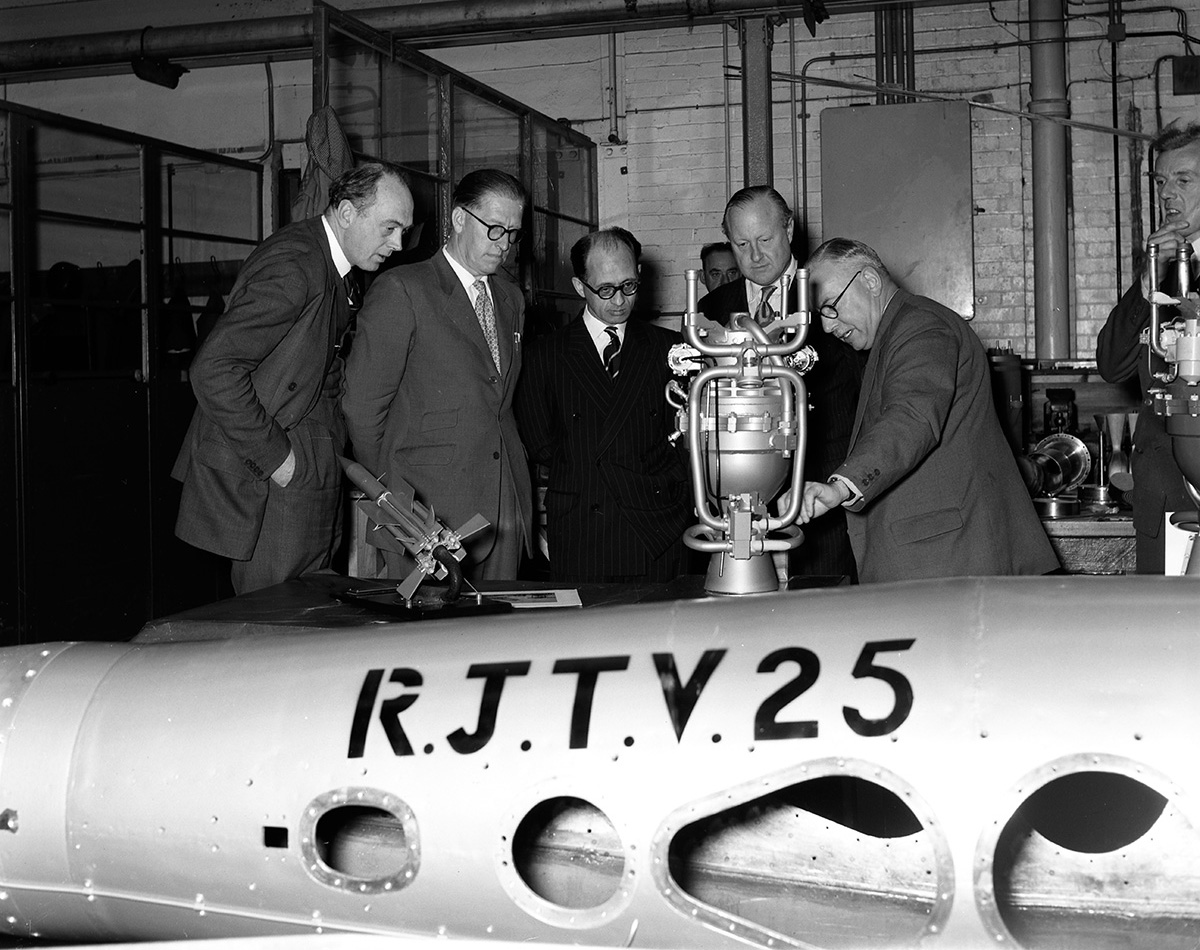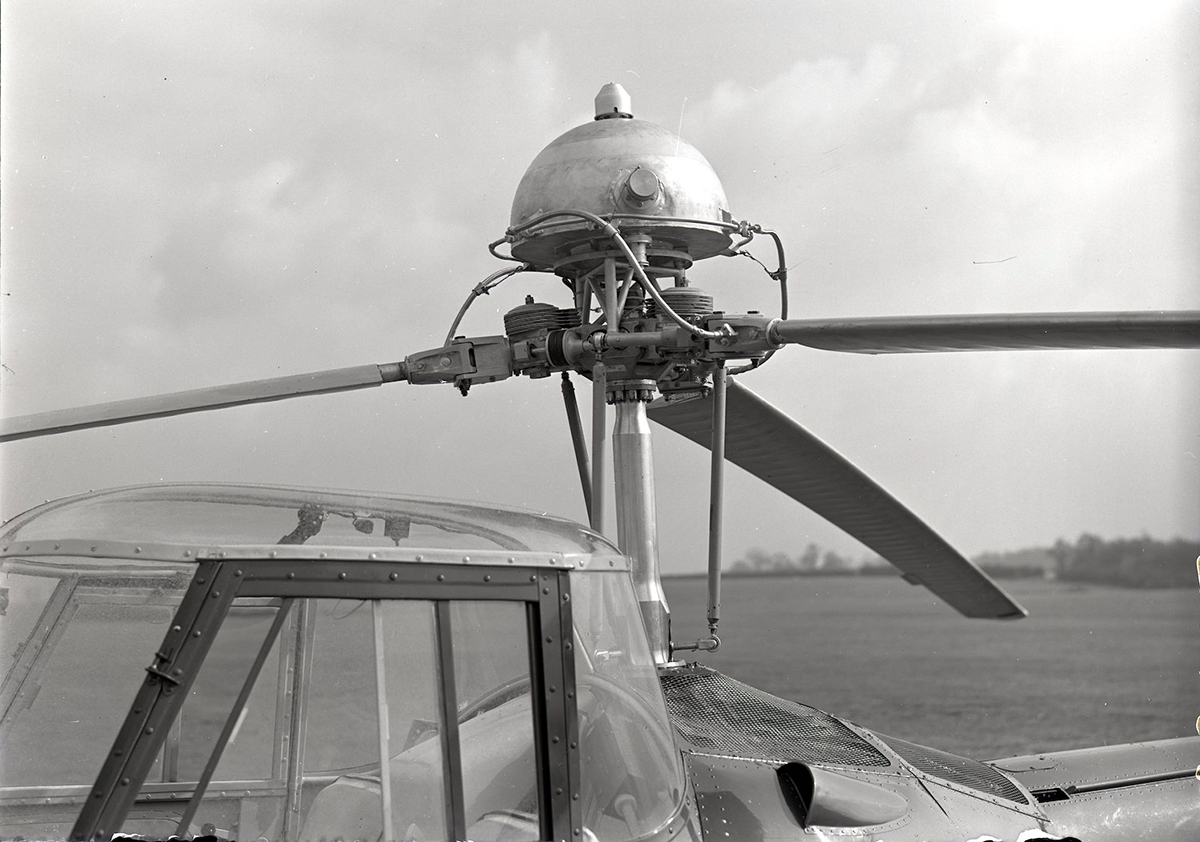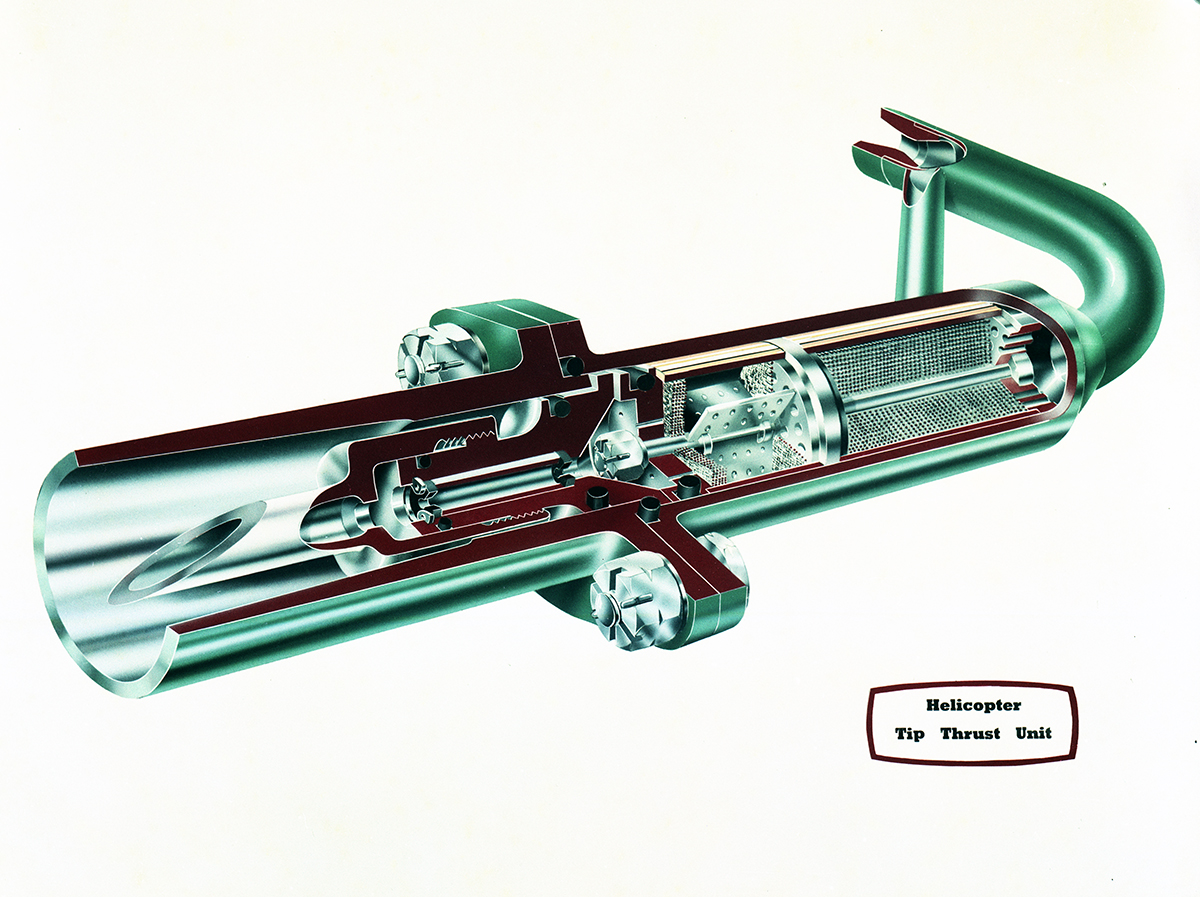Napier Rocket Engines
The Napier Flight Development Establishment in Luton was involved in a series of 20 rocket engine designs mainly as a sub-contractor to the English Electric parent company. After WW2 the British Air Ministry had issued specifications for a series of rocket engines using solid and liquid fuels. Napier Luton submitted designs for a liquid fuelled rocket engine using catalysed hydrogen peroxide in the form of High Test Peroxide (HTP) as the oxidiser and kerosene as the fuel. Several were built and tested; they were referred to as LTV or “Luton Test Vehicles”.
The NRE (Napier rocket engine) series varied in power and size, and were designed for missiles and aircraft use. The English Electric Thunderbird was a surface-to-air missile produced by English Electric for the British Army for high altitude targets with a range of around 30 miles. This project involved contributions from different companies and the English Electric development was referred to as Red Shoes / later Thunderbird. The sustainer motors were originally intended to be liquid fuel rocket engines and several different designs were tested. However the use of liquid fuel was abandoned in favour of solid fuel rockets due to the difficulty of handling the highly reactive liquid fuel in the field.
The use of liquid fuel rocket engines was further developed by Napier Luton in the late 1950’s as the Napier Scorpion design to act as boosters to enhance aircraft take-off performance. These were flown in English Electric Canberra aircraft but also proposed for fitting in the aircraft including the English Electric Lightning.
Examples of the various Napier rocket engine designs are listed below.
NRE 1 1951 Mono-propellant rocket with a thermite-igniter using ammonium nitrate fuel to produce 1,000 lb. thrust.
High Test Peroxide (HTP) and kerosene bi-propellent thermal ignition rocket engine
NRE 4 Sept. 1952 Flight development for guided missiles to produce 2,400 lb. thrust @5,000′.
NRE 5 Nov. 1952 For assisted take-off producing 8,000 lb. thrust @ sea level.
NRE 6 June 1953 Preliminary design for aircraft producing 9,500 lb. thrust @ sea level.
NRE 7 June 1953 Preliminary design for aircraft producing 2,500 lb. thrust @42,000′.
NRE 8 June 1953 Preliminary design for aircraft producing 4,000 and 2,000 lb. thrust @ 40,000′.
NRE 9 Oct. 1953 Preliminary design Twin chamber producing variable 10,000 – 1,500 lb. thrust @ 40,000′.
NRE 10 Nov. 1953 Flight development for guided missiles producing 2,400 lb. thrust @ 5,000′.
NRE 11 1954 ‘Red Shoes’ ground -to-air missile sustainer rocket engine producing 3,000 lb. thrust.
NRE 14 Single Scorpion producing 2,250 lb. thrust. Development of NRE 11
NRE 15 Mar. 1954 Twin chamber Double Scorpion for aircraft producing 4,500 lb. thrust @ 40,000′.
NRE 16 July 1954 Pre-production for guided missiles producing 2,400 lb. thrust @ 5,000′.
NRE 17 July 1954 Sustainer rocket engine for ‘Thunderbird’ ground to air missiles producing 2,400 lb. thrust @ 5,000′.
NRE 19 1954 Small tip jet rocket engine as used in the Skeeter.
NRE 20 Nov. 1954 HTP and kerosene bi-propellant thermal ignition rocket engine for aircraft 5,000 lb. thrust @ 40,000′.
Two NRE.11 engines are on display at the Newark Air Museum and a cut-away example of NRE2 or 3 can be seen at the Solent Sky museum in Southampton.
The Trust has a large collection of images relating to Luton FTDE and rockets. Please CONTACT US if you have further interest.

